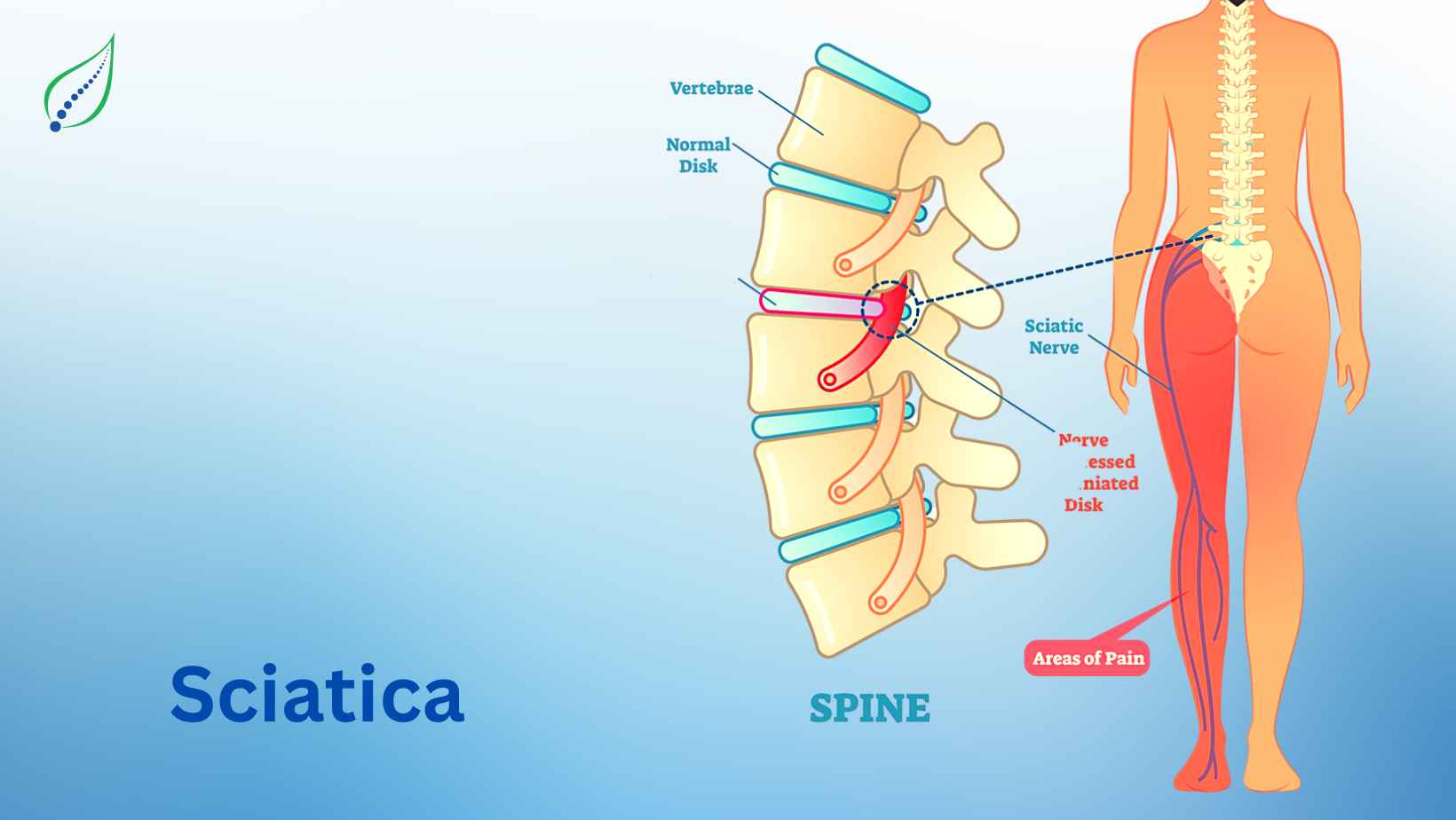Sciatica
Sciatica is the name given to a collection of symptoms that arise due to some underlying condition that leads to the compression of the sciatic nerve. There are a number of disorders that can compress the sciatic nerve such as trauma caused by an accident, tumour, disc degeneration, spondylolisthesis, and the most common one “herniated disc”. The pain can be experienced in one or both lower limbs and is radiating in nature.
Causes of Sciatica
- Herniated Disc: The spine is the support system of the body and the discs act as cushions to absorb shock from various strenuous activities. The lumbar region is the most susceptible to herniation since it supports the entire upper body as well as assists in heavy activities such as weightlifting. When a disc undergoes herniation, its nucleus breaks, and leaks into the adjoining space, thereby compressing the nearby nerve.
- Disc Degeneration: One of the most common aspects of aging is degenerative disc disease and it is also a huge risk factor for sciatica. With age, the water content of the discs dries up leaving them more prone to herniation. This can compress the nerves and cause sciatica, either on one side or both.
- Trauma to the spine: Sudden falls, accidents, and rough sports such as boxing, football, and ice hockey also have a larger risk of compressing the nerve, either through direct injury or some broken bone.
- Piriformis Syndrome: Sometimes, the piriformis muscle of the hip can irritate the sciatic nerve, which runs right beneath it. When the muscle undergoes inflammation, it can get swollen and compress the sciatica nerve.
Risk Factors
Sciatica can develop in any person; however, old people are more prone to it due to various degenerative diseases. People who are overweight also pose a risk to their spine and can develop sciatica over time. Professions which either involve sitting for large periods of time in one position or strenuous activities such as heavy weight lifting, twisting and running, are also more susceptible to disorders of the spine, especially sciatica.
Treatment of Sciatica
The very first action towards treating Sciatica is self-care. Apply ice/heat packs to the affected area to reduce the inflammation and take over-the-counter anti-inflammatory medicine to tackle pain. When the pain has subsided a little, you can perform gentle stretches to improve the mobility of your body and strengthen the spine.
If self-care is not enough and you’re experiencing excruciating pain then you should visit a doctor. Along with muscles relaxants and pain killer your doctor might also advice spinal injections to reduce inflammation around the nerve. Physical therapy is also very effective in restoring the mobility of the body and treating the compressed nerve through gentle exercises which help in building core strength. Through various research it has been proved that non-surgical multidisciplinary treatment gives excellent results in almost all the cases of sciatica pain. Other precautionary measures which you can take while undergoing treatment for sciatica are resting and avoiding activities that can trigger pain. Some studies have also hinted at a connection between stress and anxiety and sciatica.

_1744793045.png)
_1743751136.png)
_1738219992.png)
